News and events
2024-25
- School of Chemistry hosts 49th Institute of Chemistry of Ireland (ICI) Annual Congress 2025
- Congratulations to School of Chemistry Senior Sophister Class of 2025
- School of Chemistry research group discovers that plastic manufacturing processes can jeopardise food safety and damage the environment
- Congratulations to our new Scholars
- Special Commendation for School of Chemistry team at RDS Circular Economy Awards 2025
- Two Trinity projects awarded over €5million in latest awards from Research Ireland
- School of Chemistry achieves Royal Society of Chemistry Accreditation
- VACANCY: Research Fellow in Chemistry Education and Public Engagement (EPE)
- Researchers secure EPA funding to pursue seven "green living" projects
- Onscreen chemistry: New book considers the portrayal of chemical science in film and TV
- School of Chemistry welcomes Nobel Prize winner, Prof. Ben Feringa
- Scientists develop “Malteser-like” molecules with potential applications in targeted drug delivery
- BOC Gases Bursary Awards
- Graduation Day for Class of 2024
- 13 School of Chemistry Researchers on Elsevier/Stanford University World’s Top 2% Scientists Ranking
- Prof. Mike Lyons celebrates 40 years at Trinity College
- Prof. Valeria Nicolosi appointed to the board of Taighde Éireann
School of Chemistry hosts 49th Institute of Chemistry of Ireland (ICI) Annual Congress 2025
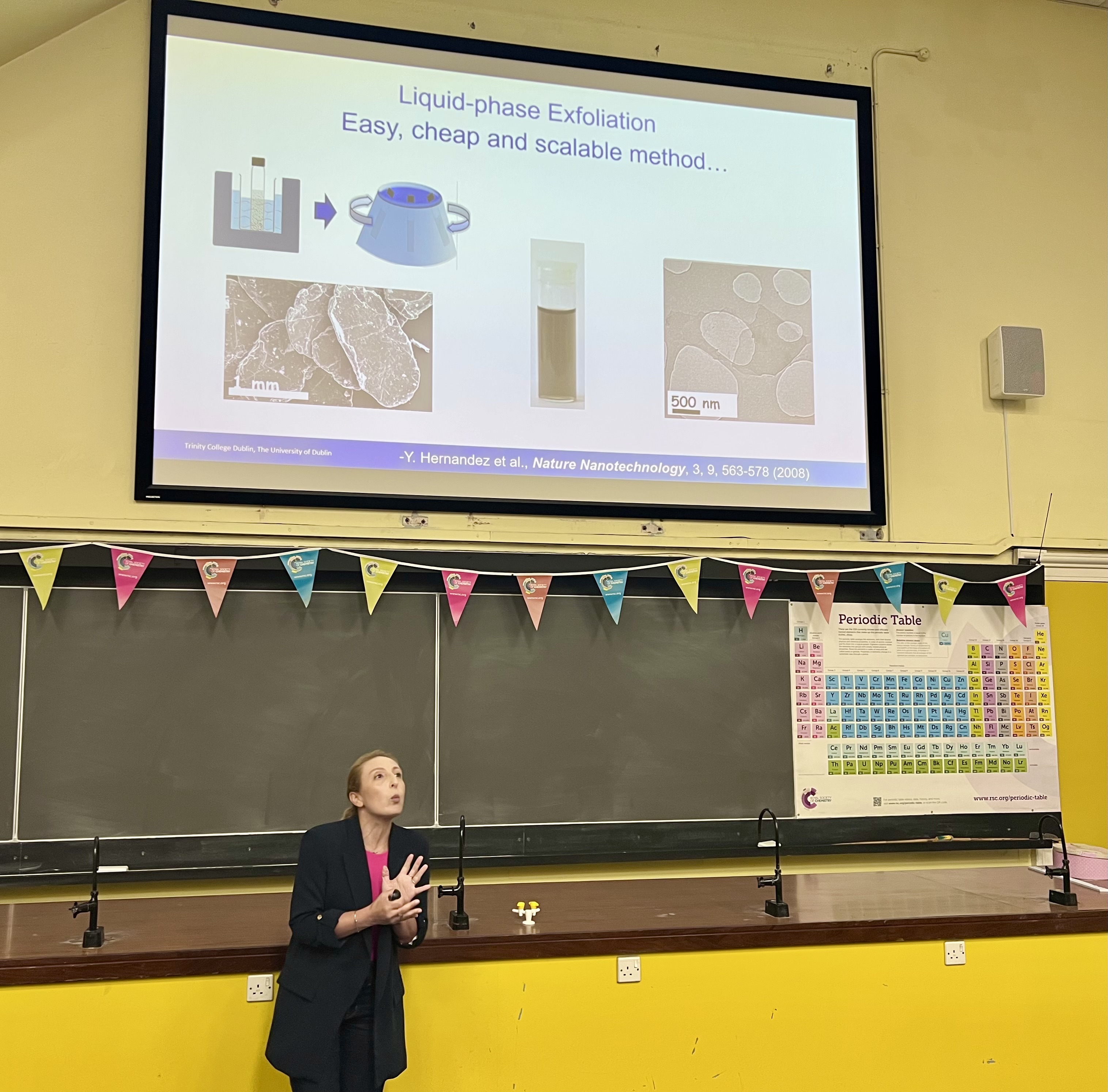
The School of Chemistry was delighted to host the 49th ICI Annual Congress on Wednesday 4th June 2025. The theme of the congress was Electrochemical Horizons, a topic which is of significant topical interest given that Electrochemical Science underpins much of the important technological advances sustaining our 21st century world.
Attendees enjoyed presentations from an excellent group of speakers consisting of established and early career academics from the whole island of Ireland, including Keynote speakers, Valeria Nicolosi (TCD) and Robert Forster (DCU). Other speakers were Paula Colavita (TCD), Carmel Breslin (MU), Micheal Scanlon (UL), Robert Johnson (UCD), Paul Kavanagh (QUB) and Chris Batchelor McCauley (TCD).
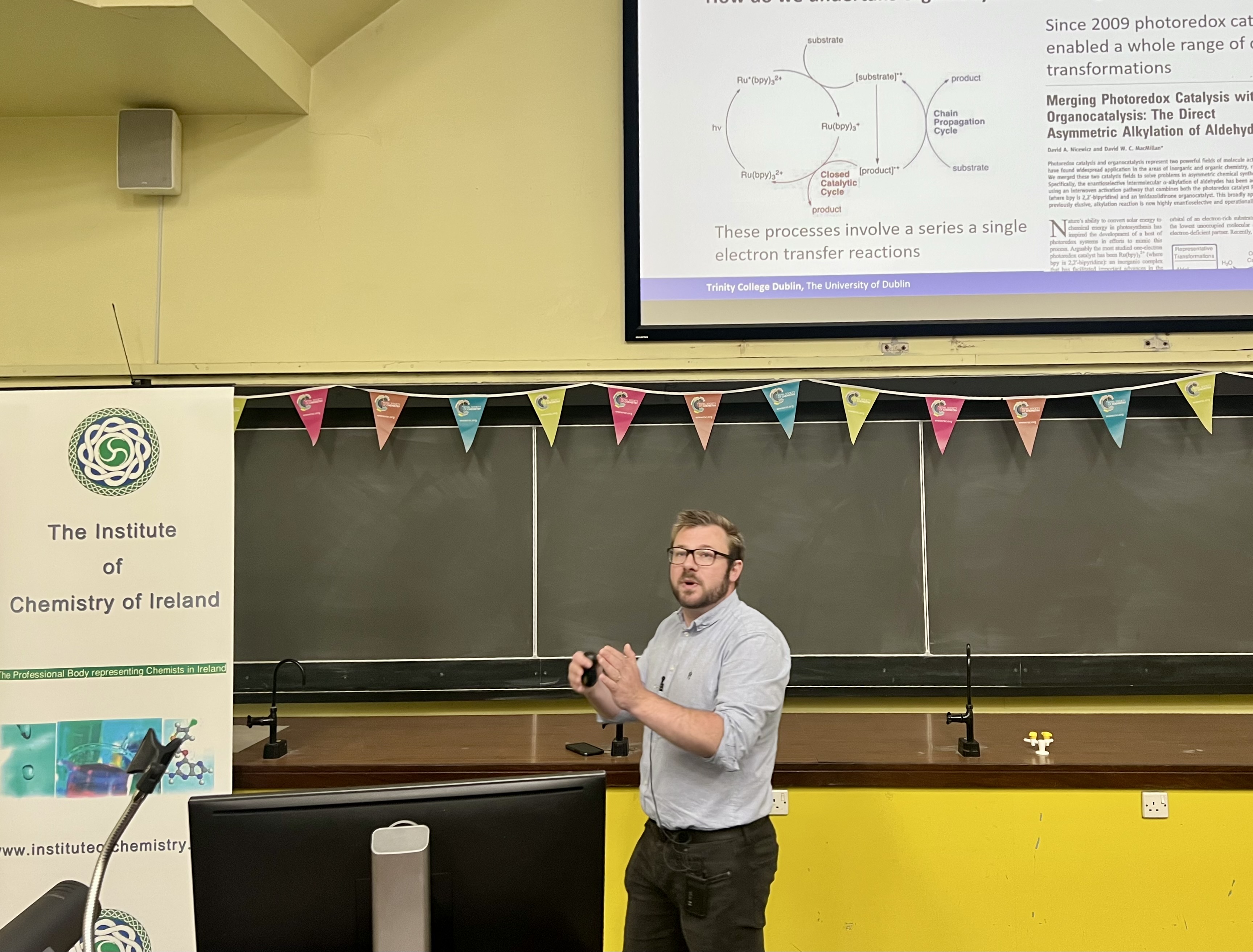
A poster presentation competition for students around the country was also held during the day. The winner was Raju Lipin, from the Dept. of Chemical Science and Bernal Institute in the University of Limerick with his poster entitled "Not too much, not too little: how metal overlayers control hydrogen scorpion on Pd(111)."
The conference was a great success, and it seems that the Irish Electrochemistry community is thriving and has a great future!
Congratulations Class of 2025. Best of luck for the future and don't forget to keep in touch!
Congratulations to School of Chemistry Senior Sophister Class of 2025

Four years of hard work culminated in a reception for the Senior Sophister class on Friday May 23rd. Students gathered in the entrance hall of the Chemistry building to celebrate their achievements with some wine, beer and sweet & savoury canapés.
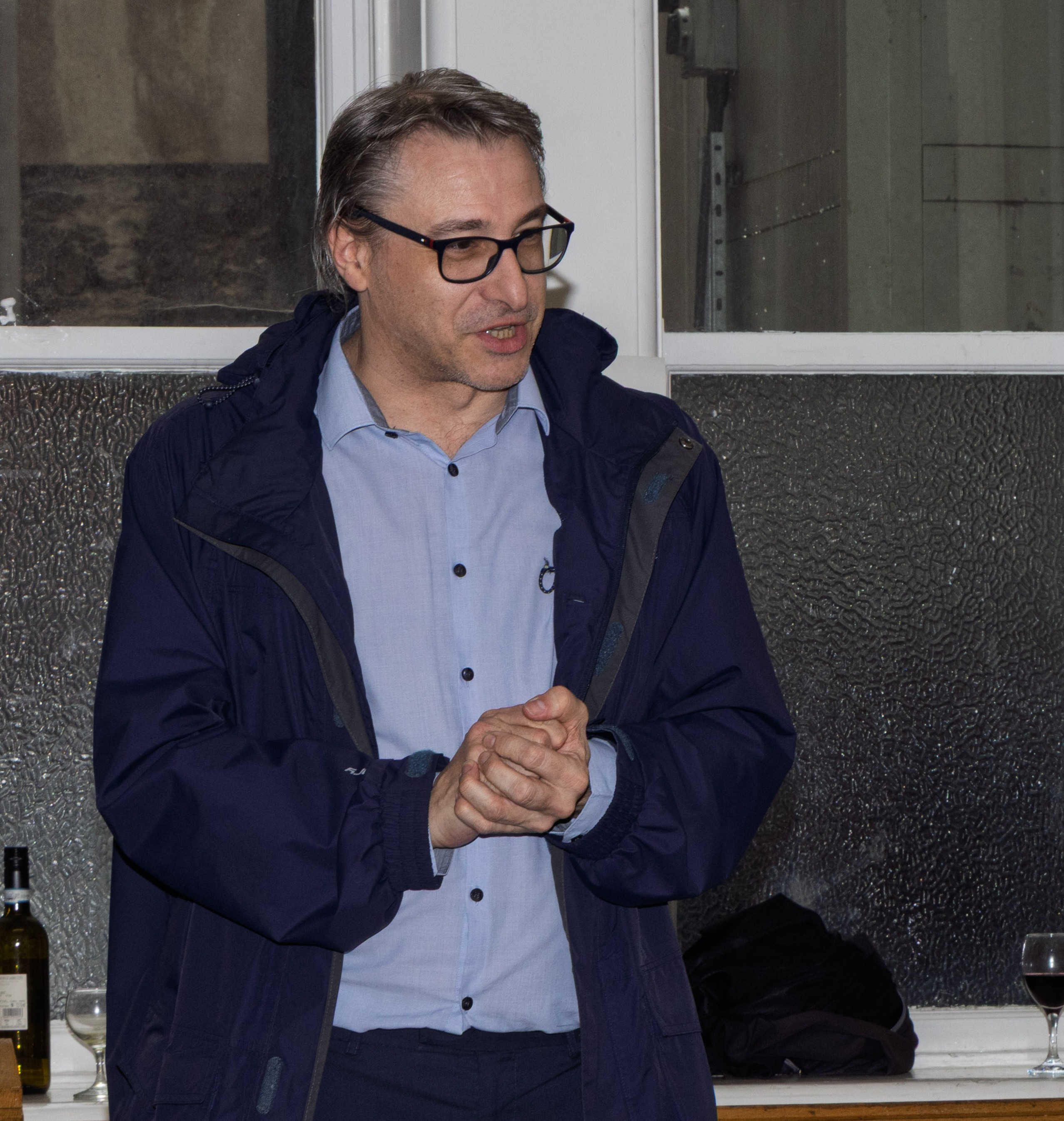
Head of School, Graeme Watson, spoke to the class to congratulate them on completing their studies and to wish them well for the future.
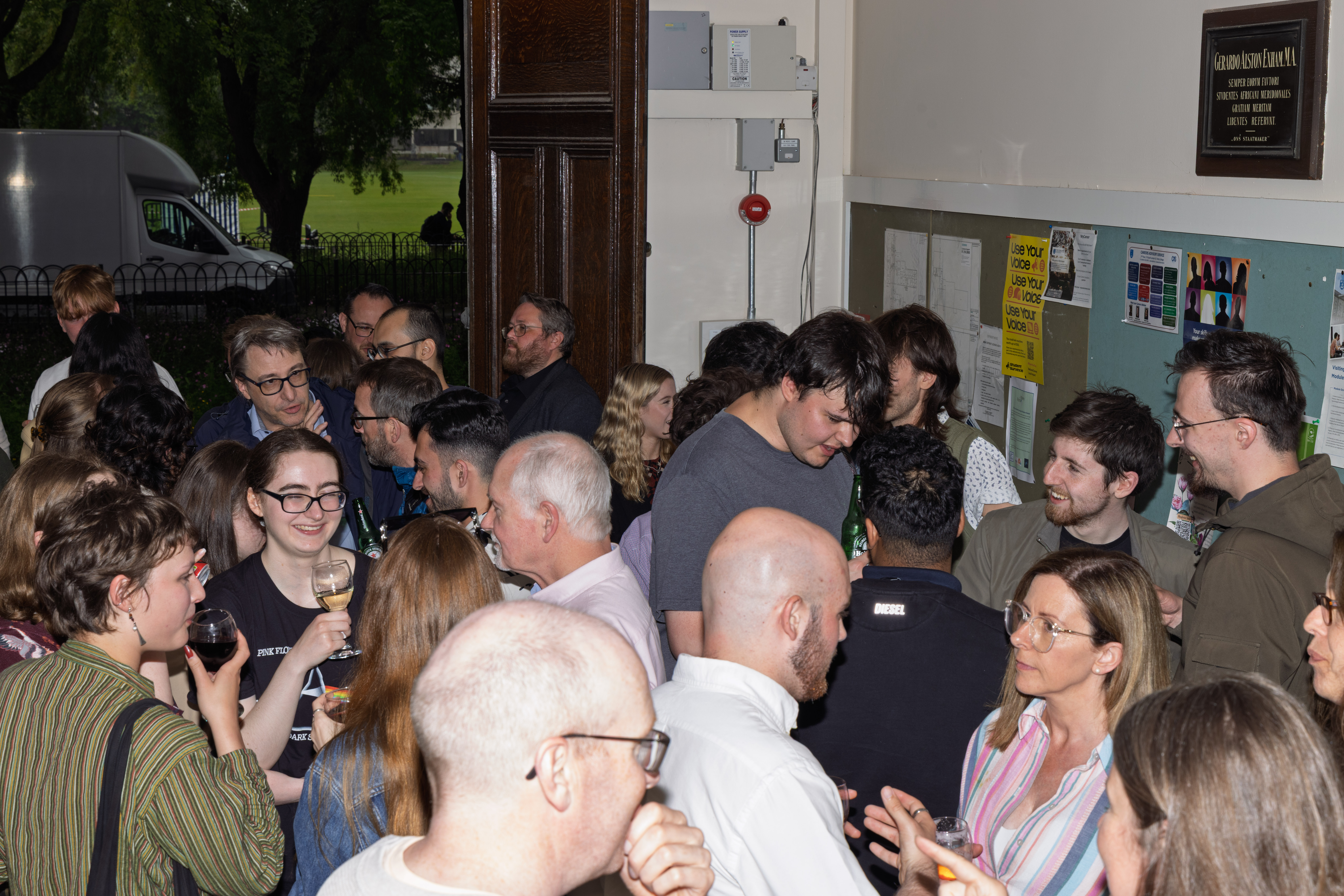
The School of Chemistry is extremely proud of the achievements of this year's graduating class, and we are greatly looking forward to following their careers as they move on to new adventures.
Congratulations Class of 2025. Best of luck for the future and don't forget to keep in touch!
School of Chemistry research group discovers that plastic manufacturing processes can jeopardise food safety and damage the environment.
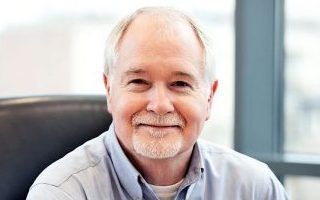
School of Chemistry Researchers led by Prof. John Boland have discovered that stress applied in making everyday products such as plastic bottles and containers is what causes them to shed microplastic particles into our food and the environment.
The group published a paper entitled “Stress-induced phase separation in plastics drives the release of amorphous polymer micropollutants into water” in the Nature Communications Journal and the results were reported in the Irish Times and The Examiner also.
Congratulations to John and his team!
Congratulations to our new Scholars
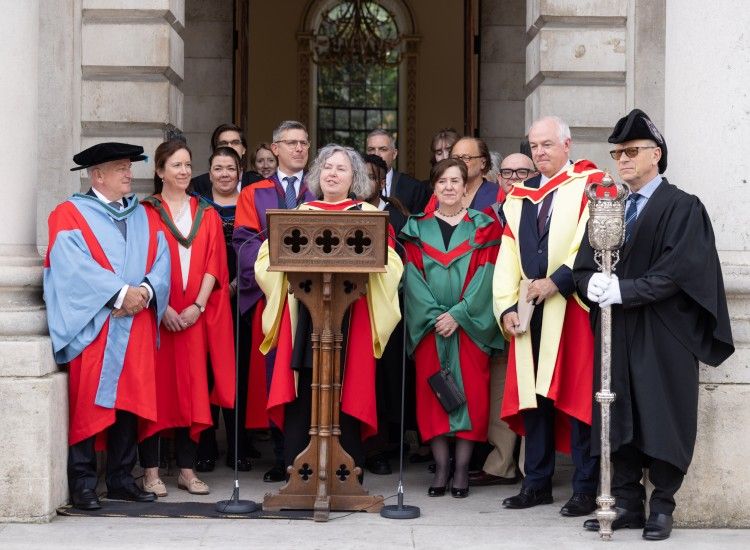
The School of Chemistry was delighted to gain three new Scholars on Trinity Monday this year. Congratulations to Fintan Byrne, Alicia Cichocka and Isabelle Clarke who all succeeded in the scholarship exams in January.
Announcing the names from the steps of the Public Theatre in Front Square, Provost Dr Linda Doyle said:
"On behalf of the Trinity community, I offer my warmest congratulations to everyone who has been elected to Fellowship and Scholarship. These are fantastic academic achievements, and the new Fellows and Scholars deserve to feel very proud today. I also want to commend everyone who sat the “Schols” exams and everyone who put their name forward for Fellowship. That commitment and courage reflect the very best of our community. Comhghairdeas ó chroí libh."
We are very proud of our three new Scholars and are looking forward to following their academic careers. Well done to all students who sat the exams and congratulations to all newly elected scholars on Trinity Monday. It is a great achievement. See here for a full list of Fellows and Scholars elected on Trinity Monday 2025
Special Commendation for School of Chemistry team at RDS Circular Economy Awards 2025
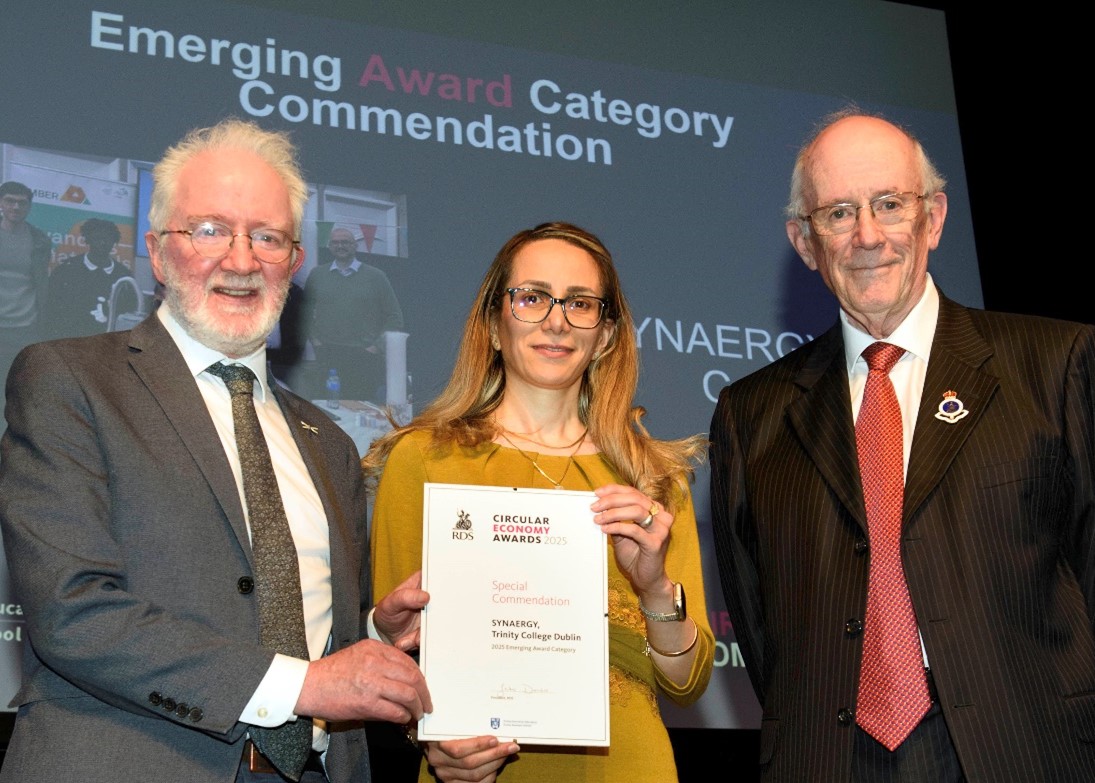
The Carbon Capture Team (SYNAERGY) from the School of Chemistry at Trinity College Dublin, led by Prof. Wolfgang Schmitt and Dr. Sebastien Vaesen, has been recognised for its contribution to the circular economy at the RDS Circular Economy Awards 2025.
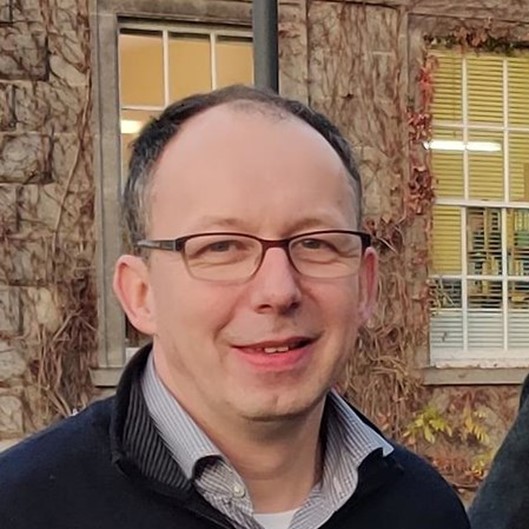
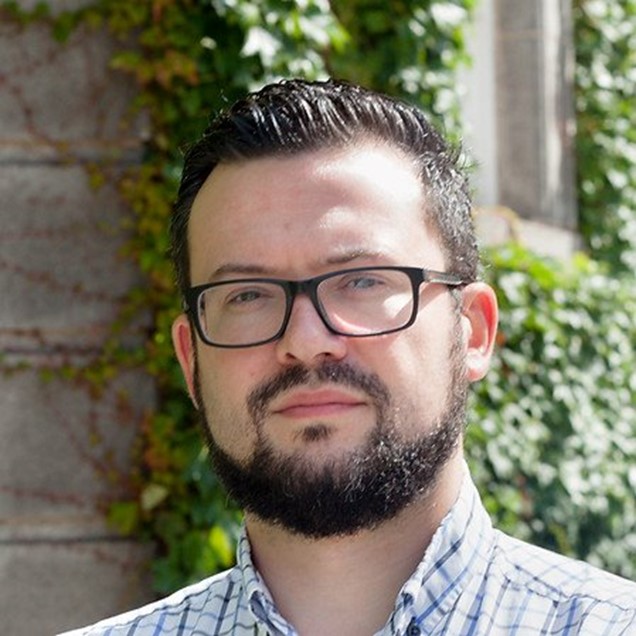
SYNAERGY is commercialising its latest high-performance Direct Air Carbon Capture technology, funded by EIC transition grant and previously supported by SFI, EIC, EI. This technology offers an innovative solution for industries whose indirect CO₂ emissions in the supply chain cannot be easily removed at the source and integration into industrial processes using low-grade waste heat facilitates CO₂ capture at scale, resulting in pure CO₂, a high-value commodity in a circular carbon economy striving for climate neutrality. Team members: Prof. Wolfgang Schmitt, Dr. Sebastien Vaesen, Dr. Elham Katoueizadeh, Zoe Yang, Dr. Karl Ackland, Dr. Shrabana Sarkar, Olajuwon Dele

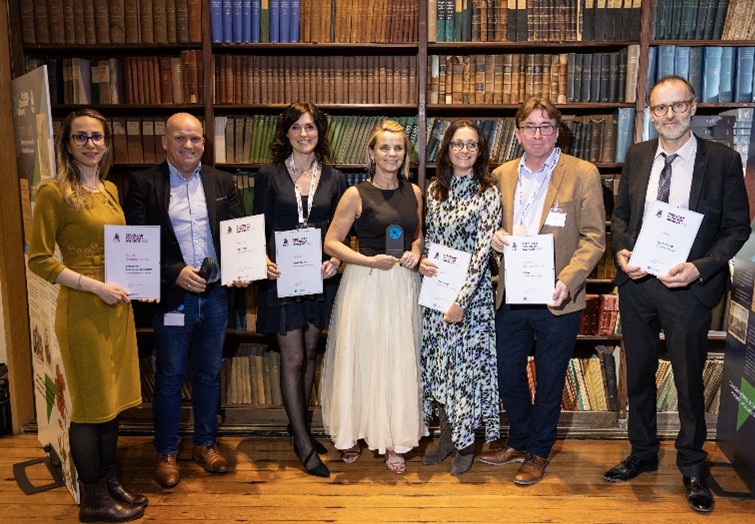
School of Chemistry achieves Royal Society of Chemistry Accreditation
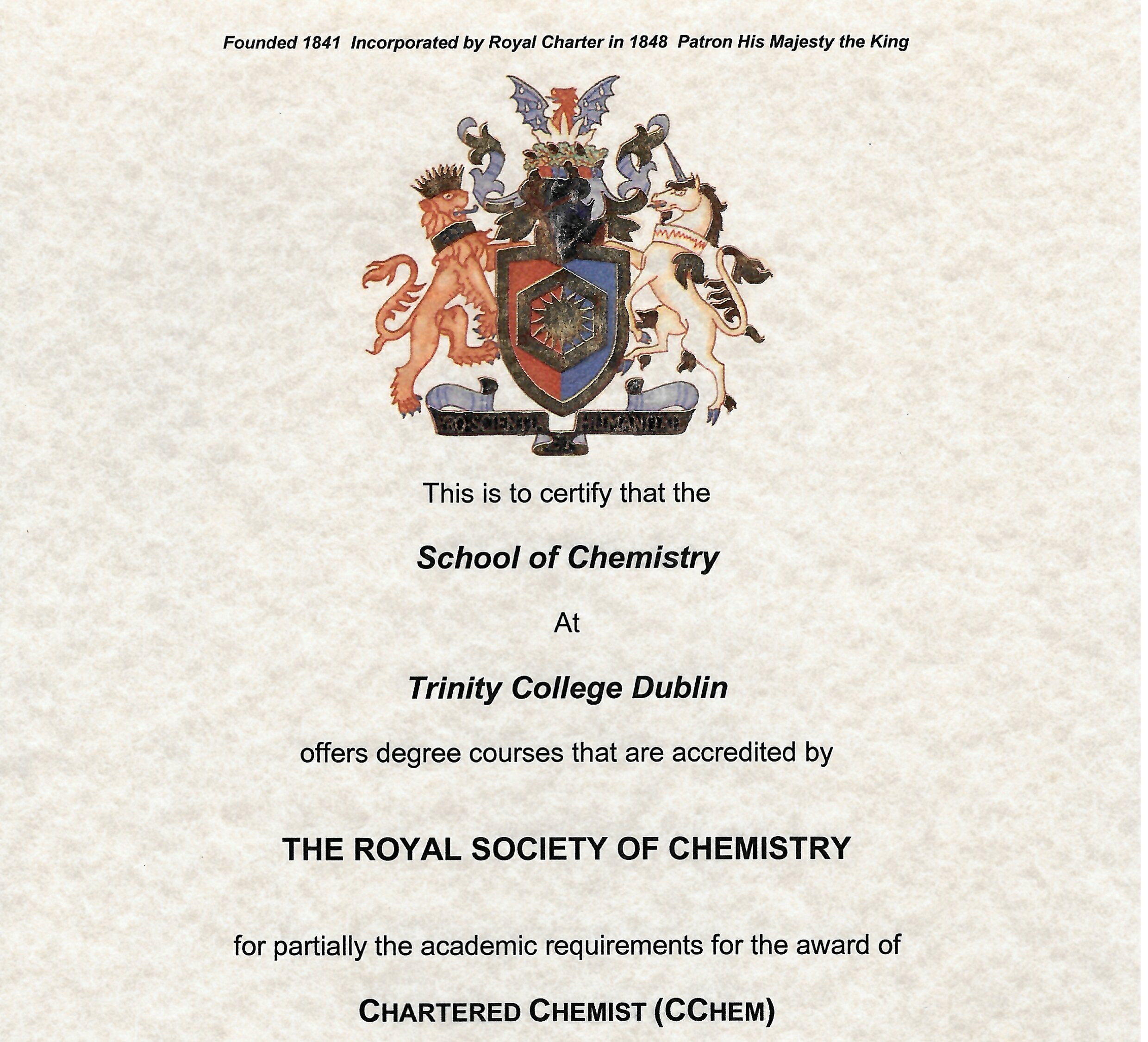
Following a lengthy and rigorous assessment process, the School of Chemistry is delighted to have achieved Royal Society of Chemistry (RSC) accreditation for the Chemistry, Chemistry with Molecular Modelling and Medicinal Chemistry degrees programmes. The accreditation will take effect from the 2025/26 academic year and students entering the programme will be eligible for free RSC student membership.
The RSC is the world’s leading chemistry community, with a heritage that spans 175 years. Their accreditation is prestigious and marks the School of Chemistry at TCD out as an institution that competes on the global stage. There are many benefits to accreditation including enhanced prospects for government and industry funding, greater access to an international network of Chemistry consultants and leading experts, increased engagement with industry partners and improved access to workplace opportunities for graduates. The accreditation also gives a clear route for graduated to achieve the globally recognised Chartered Chemist qualification and cements TCD School of Chemistry’s reputation as providers of chemistry education of the highest quality.
In an email to staff, Head of School, Prof. Graeme Watson said “It is with great pleasure that I can announce that the School of Chemistry has received RSC accreditation for the Chemistry, Chemistry with Molecular Modelling and Medicinal Chemistry degrees programmes. I would like to thank everyone who contributed to this effort but especially Prof. Valeria Nicolosi and Dr Noelle Scully. They put a lot of hard work into making the application and meeting the requirements for accreditation.”
More information on RSC accreditation and a full list of accredited courses can be found on the RSC website
School of Chemistry welcomes Nobel Prize winner, Prof. Ben Feringa

The School of Chemistry was delighted to welcome Nobel Laureate, Prof. Ben Feringa for a visit this week. Prof. Feringa joined graduate students and post-doctoral researchers from the school for a small Organic Chemistry Colloquium in the morning before giving a lecture to over 250 people on "the art of building small".
Prof. Feringa shared his journey from groundbreaking discoveries in molecular switches to his recent work on light-driven nano-robots and switchable antibiotics, showcasing the power of chemistry to solve global challenges and spark scientific innovation. Attendees were particularly moved by his reflections on receiving the Nobel Prize and the crucial role curiosity and creativity play in advancing science.
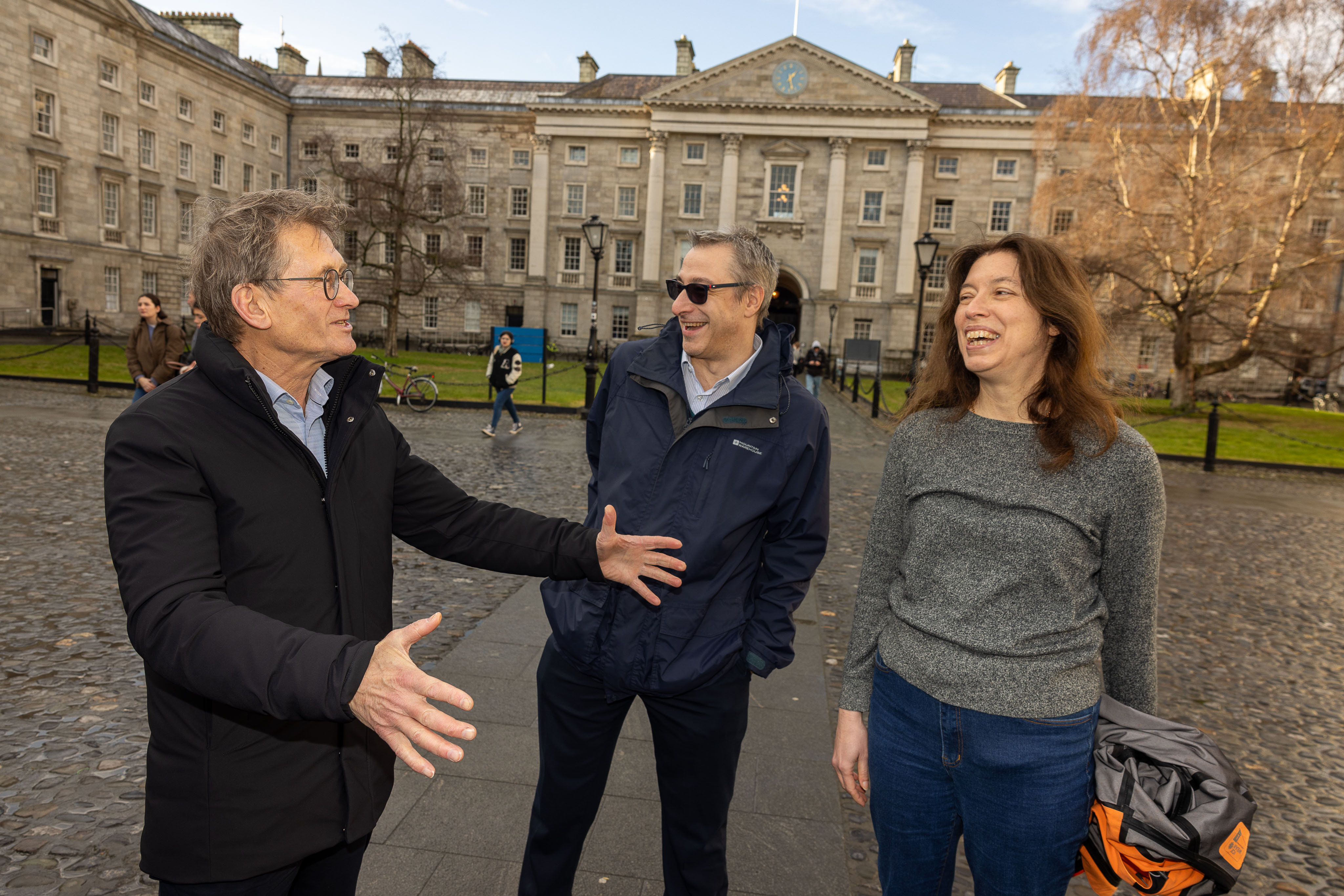
Graeme Watson, Professor of Theoretical Chemistry and Head of School (Chemistry), said: "Prof. Feringa's lecture was a tour de force in scientific innovation and creativity. His insights into molecular machines and the role of chemistry in shaping our world were inspiring and thought-provoking."
Chris Batchelor-McAuley, Assistant Professor in the School of Chemistry, added: "The opportunity for the graduate students and early career researchers to present their work to him was an invaluable experience. It was wonderful to see the high level of research and enthusiasm from the students and post-docs at Trinity."
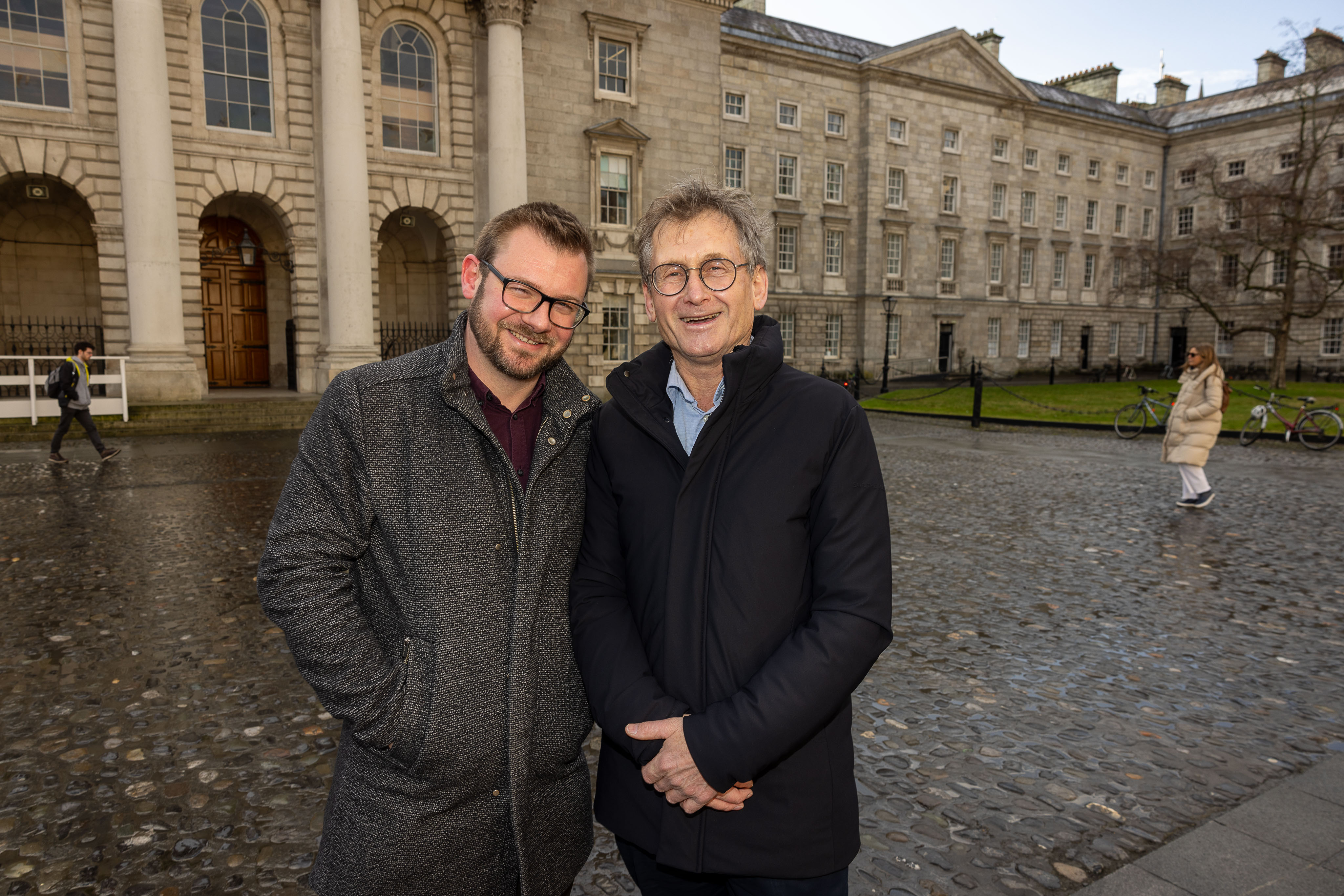
Prof. Feringa was awarded the 2016 Nobel Prize in Chemistry, together with Sir J Fraser Stoddart and Jean-Pierre Sauvage for the design and synthesis of molecular machines.
BOC Gases Bursary Awards
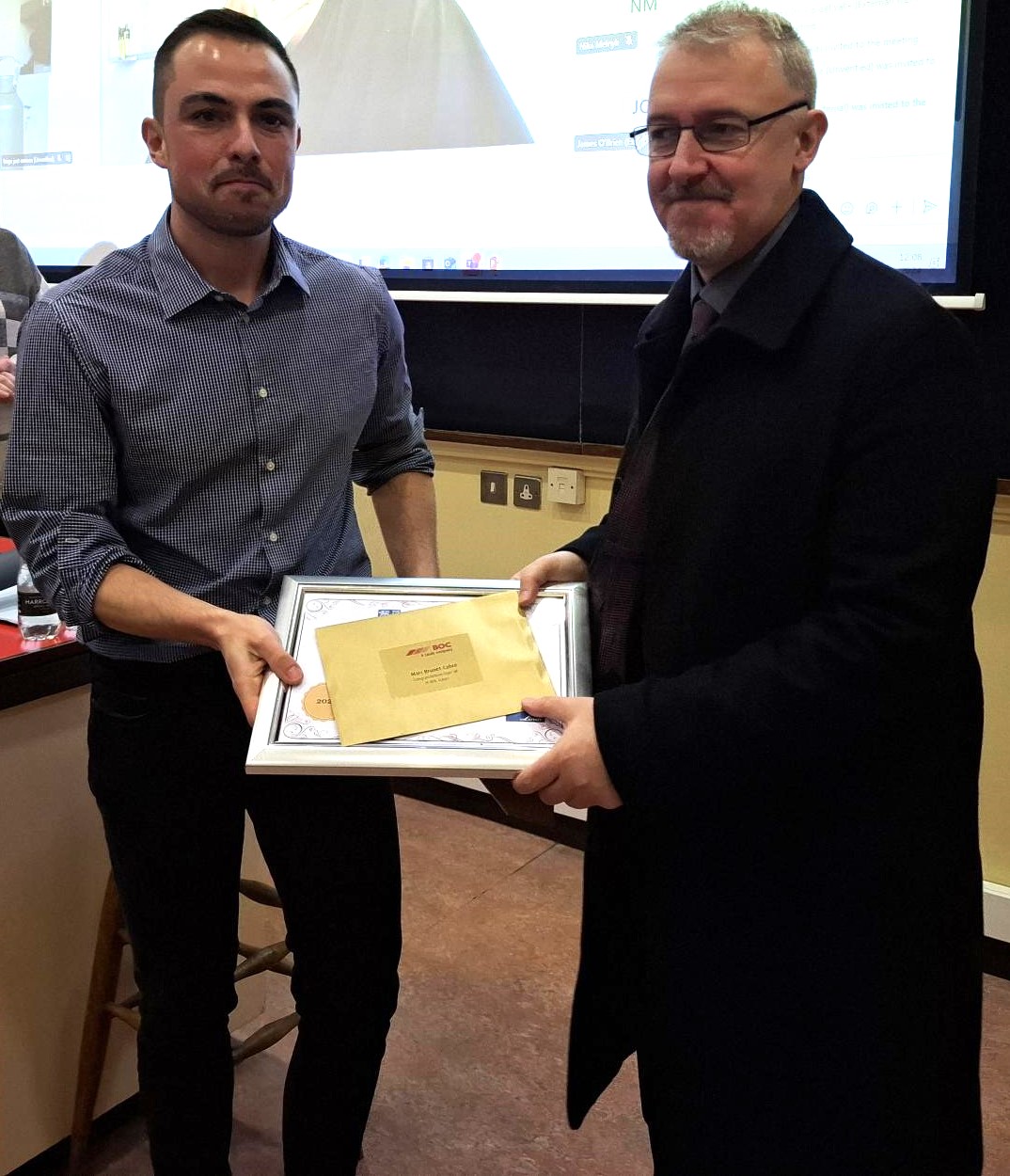
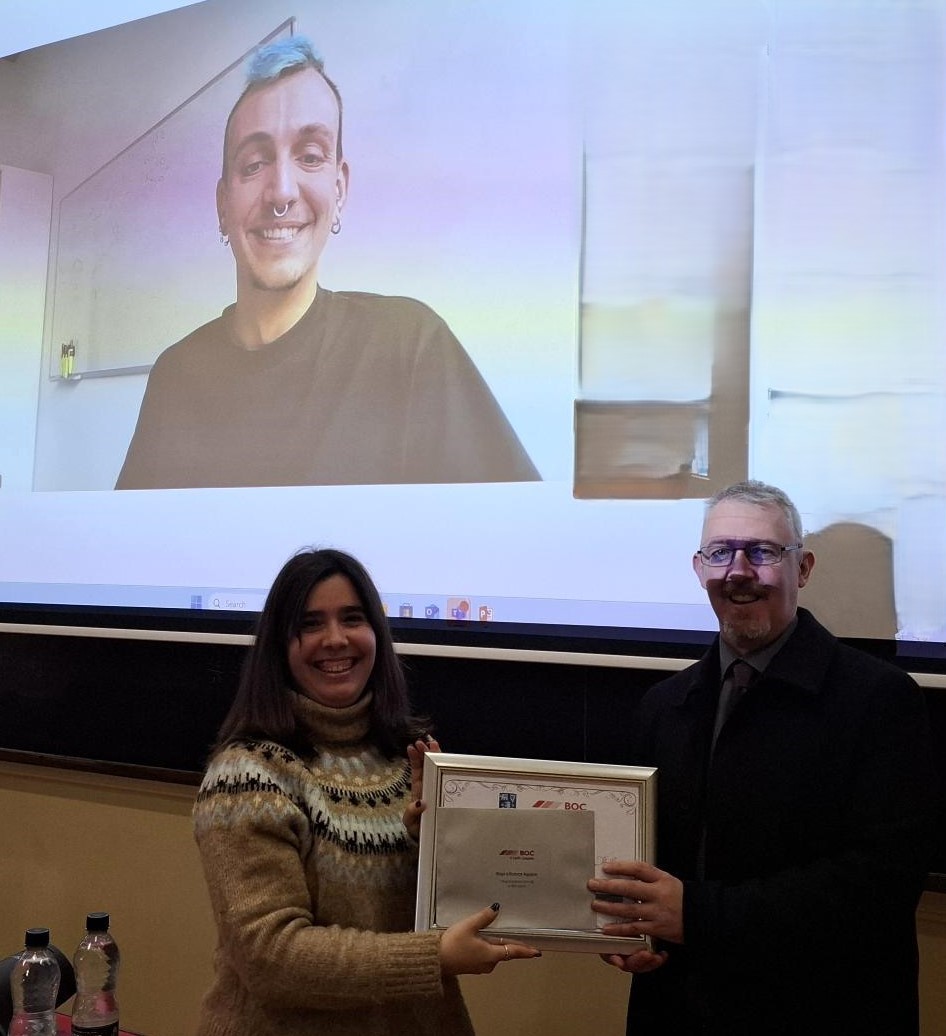

The annual postgraduate BOC Gases bursaries were awarded to three former PhD students from the School of Chemistry on Friday, December 6th. Students were nominated by their supervisors for consideration for the bursary during the nomination round and a panel of the school’s academic staff from across the Chemistry disciplines judged the submissions. With great difficulty due to the high standard of submissions, the judges identified three students whose work shone above the rest. Marc Brunet Cabré (McKelvey & Colavita groups) and Lee Anderson (Connon group) each gave a 15-minute presentation of their work to the school and to BOC Gases representative, James Kelch who presented them with certificates and their bursaries of €1250 and €500 respectively. Inigo Iribarren Aguierre (Trujillo group), was unable to attend the ceremony in person as he has gone to work in Munich since graduation. However, he was able to deliver a presentation remotely and was represented in the room by Natalia Garcia Domenech who received his certificate and €750 cheque on his behalf.
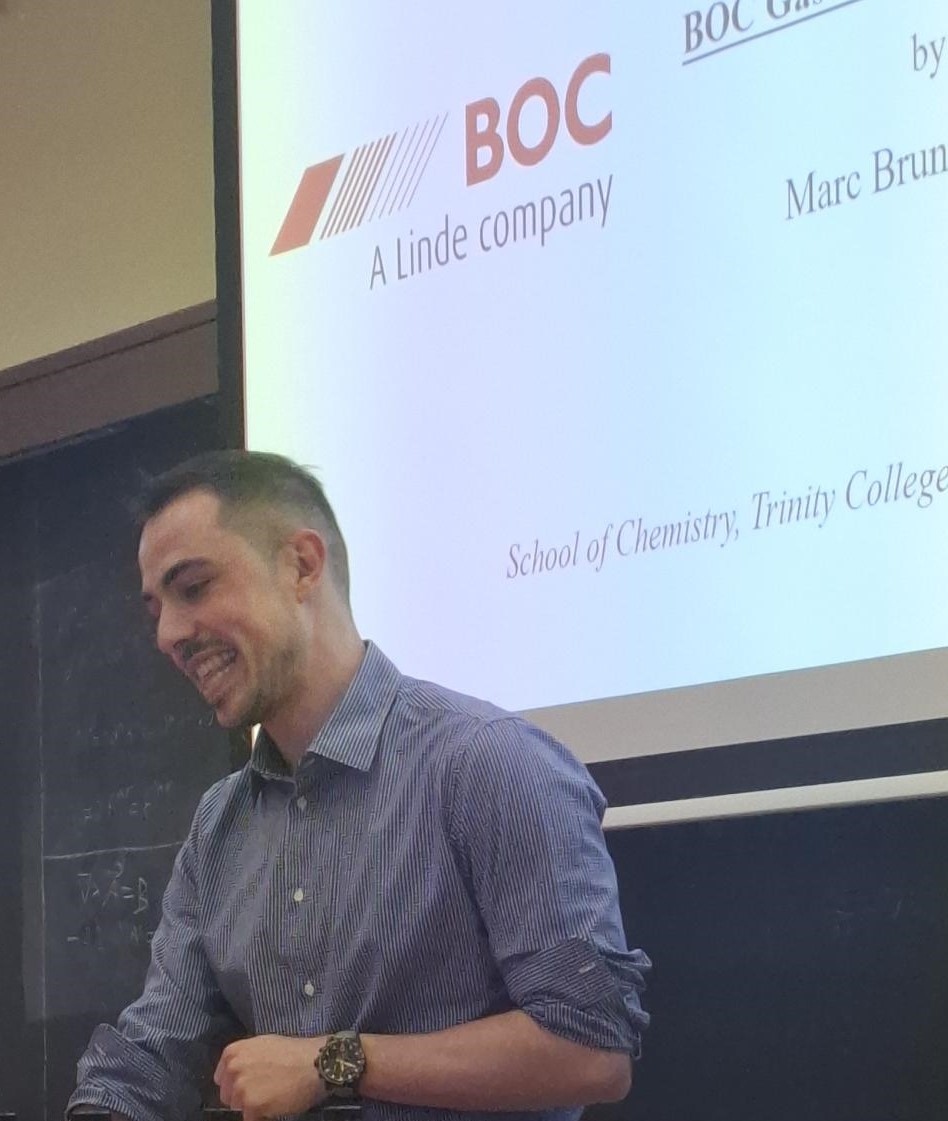
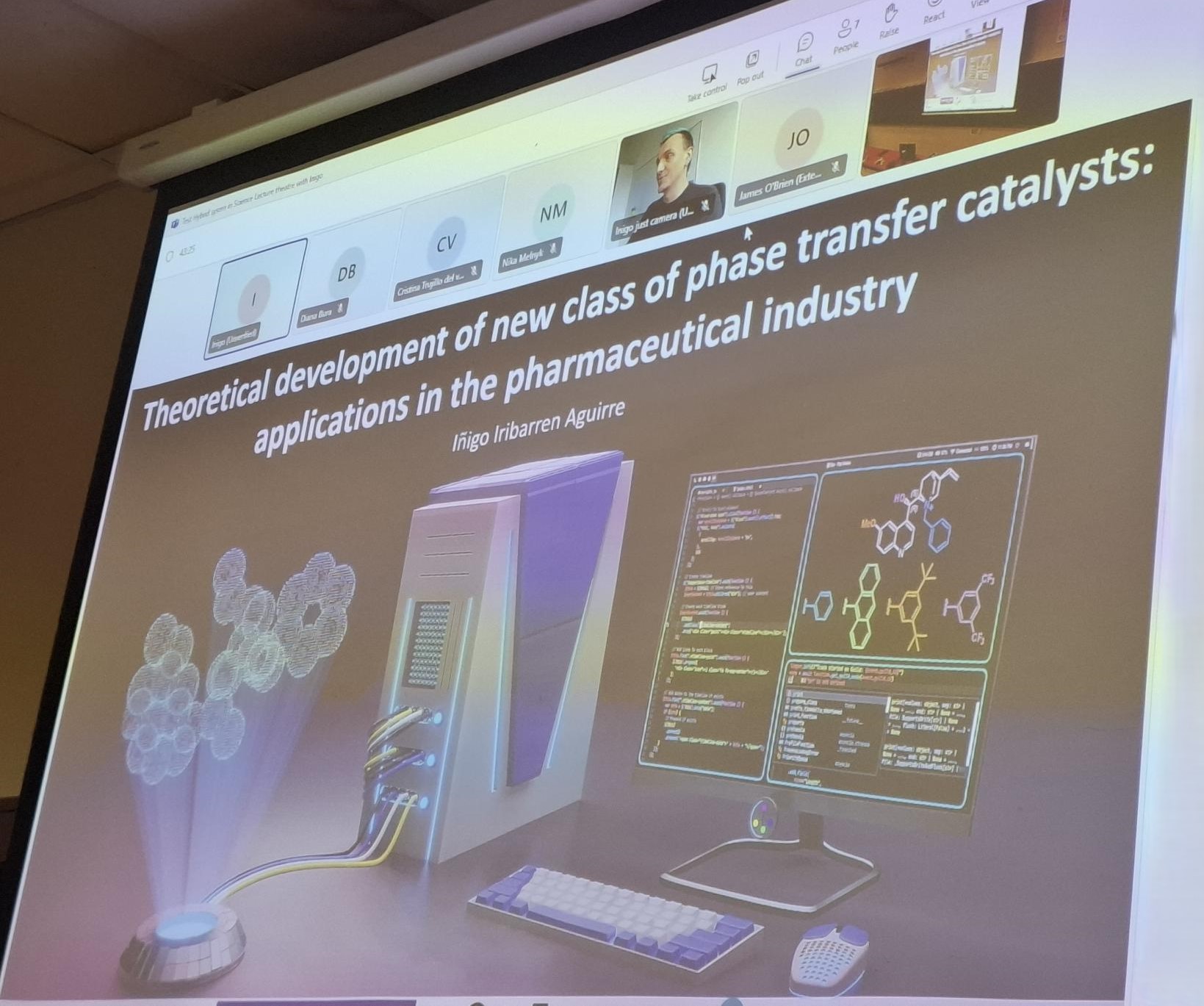
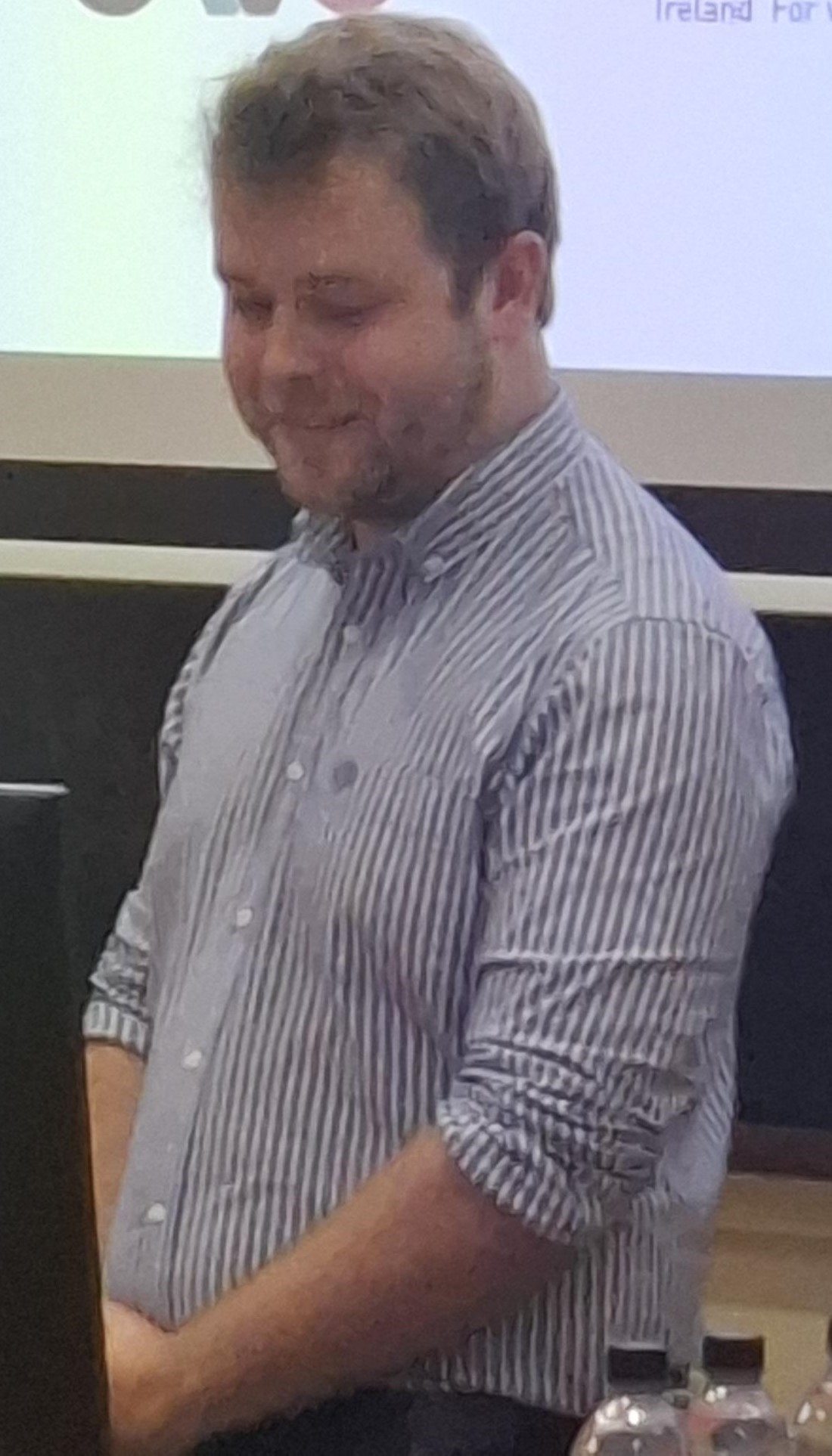
Congratulations to all three award recipients and sincere thanks to BOC Gases for their continued support of chemistry research and development!
Graduation Day for Class of 2024

Wednesday, October 23rd was a proud day for the School of Chemistry as we saw our Senior Sophister Chemical Sciences class of 2024 conferred with their awards in the Exam Hall in Front Square followed by a reception in the Atrium. This is the culmination of 4 years of hard work on the part of all of our graduates and we wish them all the best in their future adventures!
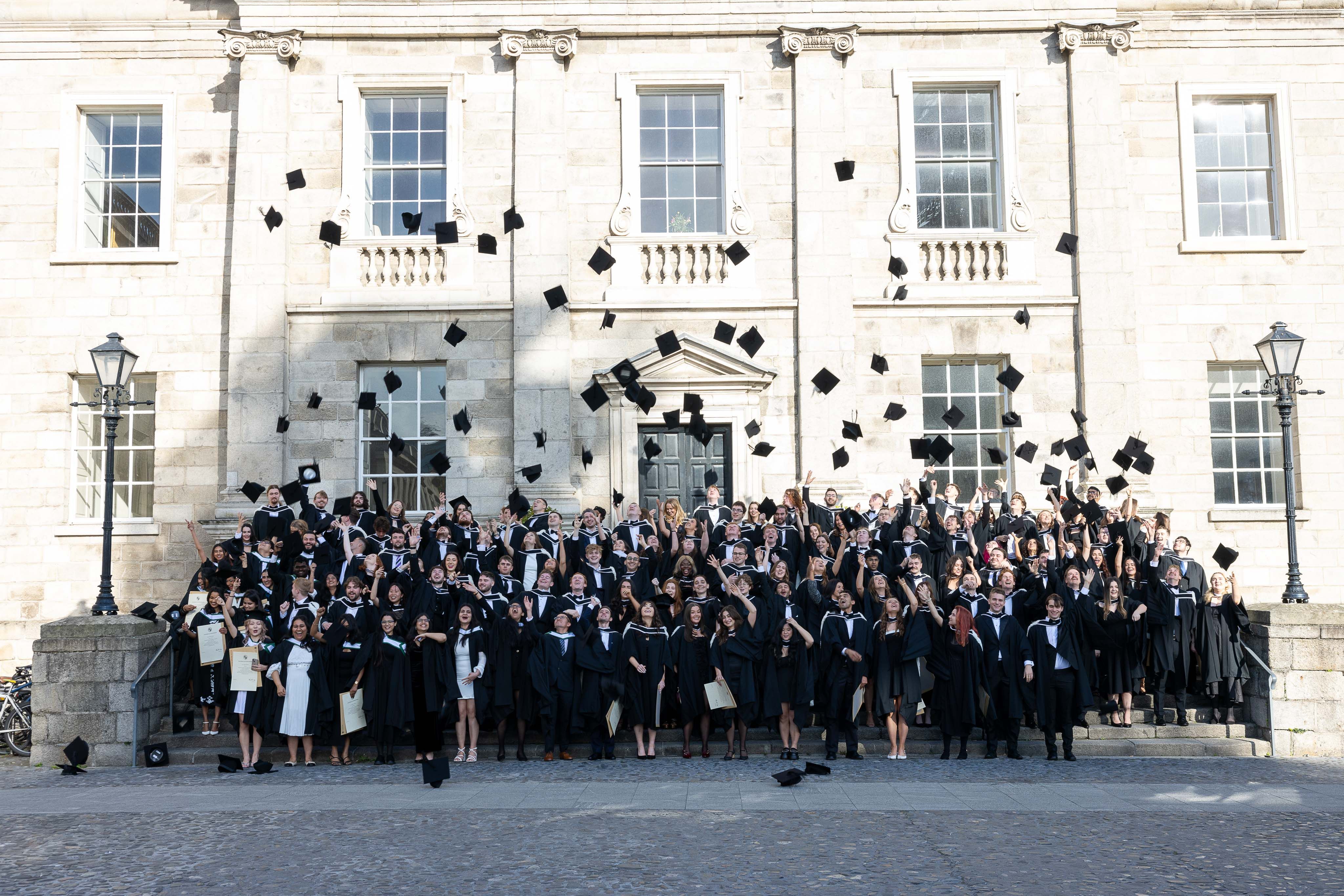
13 School of Chemistry Researchers on Elsevier/Stanford University World’s Top 2% Scientists Ranking

We were delighted to see 13 members of our research staff on the recently published list of the world's top 2% of scientists ranking for career long impact by Elsevier/Sanford University.
Congratulations to Thorri Gunnlaugsson, Mathias Senge, Stephen Connon, John Boland, Graeme Watson, Mike Lyons, Yurii Gun'ko, Isabel Rozas, Mick Morris, Valeria Nicolosi, Bob Baker, Brendan Twamley and Chris Batchelor-McAuley on this impressive achievement.
Elsevier/Stanford University have created a publicly available database of top-cited scientists that provides standardized information on citations, h-index, co-authorship adjusted hm-index, citations to papers in different authorship positions and a composite indicator (c-score). Separate data are shown for career-long and, separately, for single recent year impact. Scientists are classified into 22 scientific fields and 174 sub-fields according to the standard Science-Metrix classification. The selection is based on the top 100,000 scientists by c-score (with and without self-citations) or a percentile rank of 2% or above in the sub-field. This version (7) is based on the August 1, 2024 snapshot from Scopus, updated to end of citation year 2023. This work uses Scopus data. Calculations were performed using all Scopus author profiles as of August 1, 2024.
Full data lists can be found here
We are extremely proud to have so many of our researchers included in tis list and consider it a testament to their hard work and dedication to their respective fields. Hearty congratulations to all!
Prof. Mike Lyons celebrates 40 years at Trinity College
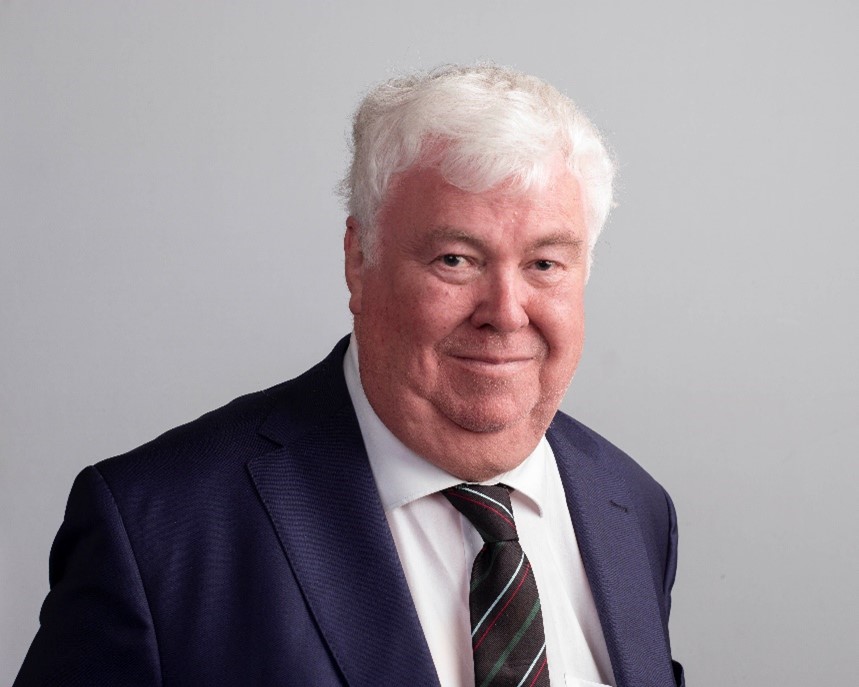
Congratulations to Professor in Physical Chemistry in the School of Chemistry, Mike Lyons on reaching an ipressive milestone of 40 years of teaching, research and service in Trinity College.
Mike is a graduate of University College Cork (BSc, PhD) and was appointed to Trinity in September 1984 after researching Electrochemical Fuel Cells in Imperial College London. Mike is a Physical Chemist specializing in Electrochemistry with a specific focus on electrocatalysis and electrochemical energy conversion and storage and is a PI in CRANN and AMBER.
During this time he has lectured in General, Physical and Materials Chemistry to legions of STEM undergraduates across all years and has supervised many Masters , PhD and Post-Doctoral researchers. He continues to enjoy teaching both at the undergraduate and postgraduate (Energy Science) level.
Mike was conferred MA(JO) in 1988 and elected to Fellowship (FTCD) in 1992 and is currently a Senior Fellow of the College. He was conferred with the Doctor in Science (ScD) degree by Trinity (2020) on the basis of scholarship and research and more recently he was elected to membership of the Royal Irish Academy (2023).
Mike has served College in a number of roles throughout the years. He was a College Tutor for 25 years and has held a number of administrative roles in the School of Chemistry including Director of Science of Materials, Head of Physical, Materials and Computational Chemistry, and most recently Head of School (2017-2023).
At College level, he has been a member of Council and Board and has served on the Central Fellowship Committee and on the Standing Committee of the Fellows on a number of occasions. Mike currently serves as a member of the University Caput and participates in University Commencement Ceremonies when needed.
When asked for his thoughts on reaching the 40-year milestone, Mike said "Working in Trinity College after 40 years continues to be a pleasure and a privilege, and the story isn't over yet!"
Congratulations Professor Lyons and thank you for your 40 years of service to the college and school!
Prof. Valeria Nicolosi appointed to the board of Taighde Éireann

Congratulations to Prof. Valeria Nicolosi who has been appointed to the board of Taighde Éireann. Taighde Éireann – Research Ireland is the new agency that amalgamates and builds on the activities and functions of the Irish Research Council (IRC) and Science Foundation Ireland (SFI).
Speaking at the announcement of appointees, Minister for Further and Higher Education, Research, Innovation and Science Patrick O'Donovan TD said:
“I want to thank the new Board members for bringing their experience and expertise to the development of Taighde Éireann – Research Ireland. Their range of backgrounds and skills will be hugely beneficial to the new agency and to realising the ambitions of the Impact 2030 Strategy.
“This Board brings a wealth and balance of both research and governance experience. The recruitment process has been grounded in ensuring that the agency has the best possible array of competencies, voices, skills, and experience, to articulate a balanced perspective across all disciplines and across the full spectrum of research and innovation.
“This has delivered a highly competent Board with an impressive assembly of the strengths and skills the new agency requires. I am very pleased to welcome the new Board and wish them every success.”
The new agency will work under the aegis of the Department of Further and Higher Education, Research, Innovation and Science, in close collaboration with the Higher Education Authority, as well as Enterprise Ireland, the Industrial Development Agency and other research funding agencies.
Speaking about her appointment, Prof. Nicolosi said:
“I am deeply honoured to have been appointed by Minister O’Donovan to the board of the newly established Taighde Éireann – Research Ireland funding agency. I look forward to serving the Irish research community and contributing my experience and expertise.”
For more about the new agency and the other board members appointed, see here

